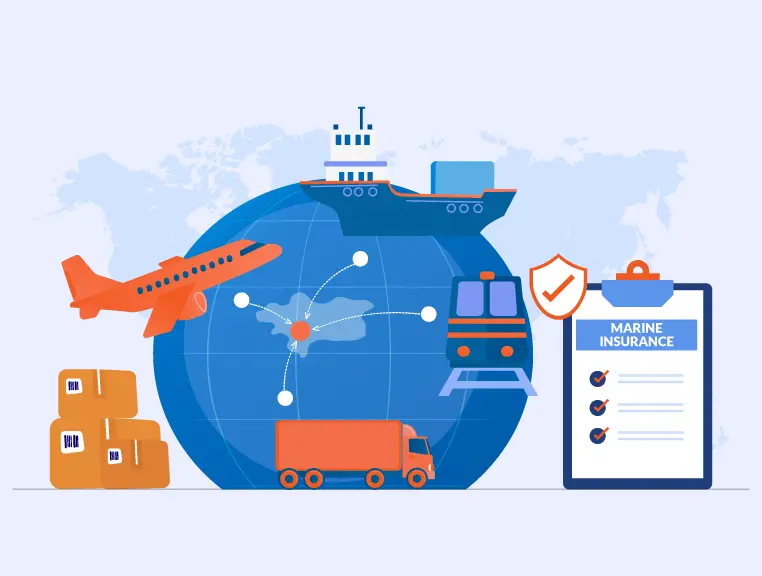Oceans connect continents in the world and thus, they give many opportunities for the transportation of goods as well. However, while sea transport entails many benefits, various hazards go with it as well. Let’s have a look at the risks that are associated with transporting goods via water.
Weather Hazards
Certain risks in transporting goods via water include weather hazards. Some of the common weather hazards related to sea transit are typhoons, cyclones, hurricanes, floods, etc. All of these hazards can have some serious repercussions and may even completely sink cargo vessels. Hurricane winds are so powerful that they can reach 160 miles per hour. Undoubtedly, it is not the situation you want to be in.
How to avoid the situation?
Make use of the strongest and seaworthy ships. Modern container ships are strong enough to stand against harsh storms. Moreover, they are very large which also helps them ride out the strong waves during a storm. Further, advances in weather detection and methodology have made it possible to anticipate storms and as a result, many shipping companies are using this information to curtail the impact of these hazards on their ships.
Geographical Hazards
In addition to weather, it includes anything on the seascape that can harm your vessel. For example, icebergs, sandbars, etc.; are some of the dangers that your vessel may face. Most of us have heard the story of the Titanic— the largest passenger ship that sank in the North Atlantic.
How to avoid the situation?
Carefully plan and navigate with extreme care. Most of the time, if something goes abruptly in terms of geographical hazards, it is mainly due to flawed navigation. For instance, the Panama Canal has the strength of supporting only 4,500 containers or less. It means, if your ship has over 4,500 containers, it is better to find any other way than going through the same route. Further, there are modern navigational technologies, like GPS which you can use to steer ships clear of known dangers. Moreover, it is of the highest importance that ship crew members are well trained and perform professionally.
Read More: 7 Reasons you need marine insurance for your next journey
Technological Hazards
It could include anything that can go wrong with shipments or their equipment. It means, it includes engine issues, structural problems, failure of navigation equipment, etc. This year, four people, including a woman, spent three scary nights at sea amid a downpour around 390 nautical miles off Mumbai shore when the engine of their ship stopped working.
Another technological hazard is the loss of shipping containers during the voyage. Such kinds of incidents can have major financial losses along with potentially damaging the ship. According to the World Shipping Council estimates, around 675 shipping containers are lost at sea every year.
How to avoid the situation?
In addition to complying with the global norms, shipping companies can also use the services of companies which are specialized in inspecting and testing cargo ships. Further, it is necessary to keep all the equipment up-to-date. Just as it is necessary to inspect ships before they depart, it is equally important to ensure that all equipment is up-to-date.
If you see any damage to the hull or any machinery is not working, you have to fix it before the ship sails, even if it means, delaying the departure. While it is always good to be on time, it is fine to delay slightly than to put your safety at risk to make a deadline. Otherwise, the decision could cost you more than merely your cargo, as it could cost you lives as well. So be extra careful.
Along with the above hazards, there is one more danger which ship owners are facing which is pirate attacks. Especially in the African region, there has been a rise in pirate attacks. At their peak in 2011, pirates launched around 237 attacks off the coast of Somalia. In order to prevent attacks, ships can have armed guards and use lasers to dazzle approaching pirates. Then nets or wires protect the ship.
Read More: When to use Marine Hull Insurance?
Buy marine hull insurance
Irrespective of how many safety precautions you have adopted, risks and damages happen. Many importers and exporters take a big risk of not insuring their goods in a bid to save costs, however, the reality is that goods in transit are highly susceptible to various losses or damages like fire, storm, theft, etc. Marine hull insurance is a great way to guard your hull and machinery against serious financial losses, including physical damage, third-party liability, terrorism, wreck removal, pirates, lightning, earthquake volcanic eruption, etc. The policy covers all types of ocean-going vessels, port crafts, sailing vessels, dredgers, etc.
A marine hull insurance policy can be bought by:
- Port Authorities
- Port/Terminal Operators
- Private Jetty Owners
Overall, sea transit brings with it tremendous opportunities, and therefore, all necessary steps should be taken to protect your goods from hazards.
About The Author
Simran
MBA Insurance and Risk
With extensive experience in the insurance industry, Simran is a seasoned writer specializing in articles on marine insurance for SecureNow. Drawing from 5 years of expertise in the field, she possesses a comprehensive understanding of the complexities and nuances of marine insurance policies. Her articles offer valuable insights into various aspects of marine insurance, including cargo protection, hull insurance, and liability coverage for marine-related risks. Renowned for their insightful analysis and informative content, Simran is committed to providing readers with actionable information that helps them navigate the intricacies of marine insurance with confidence.





